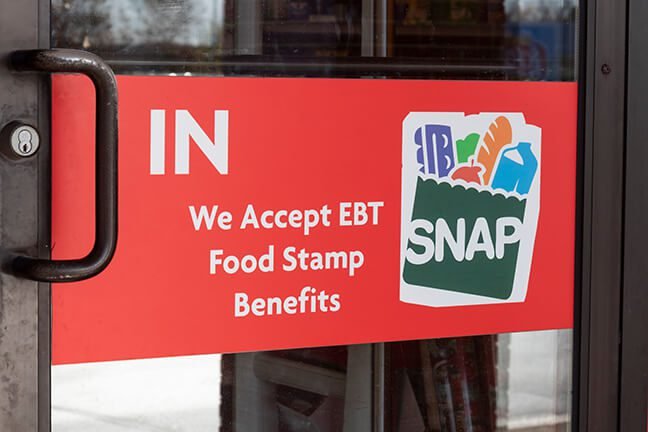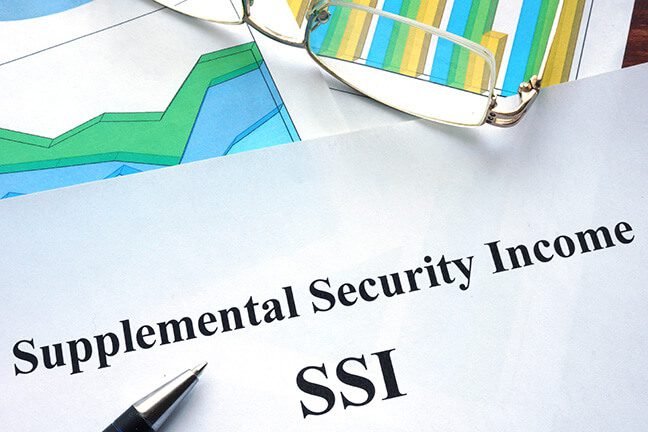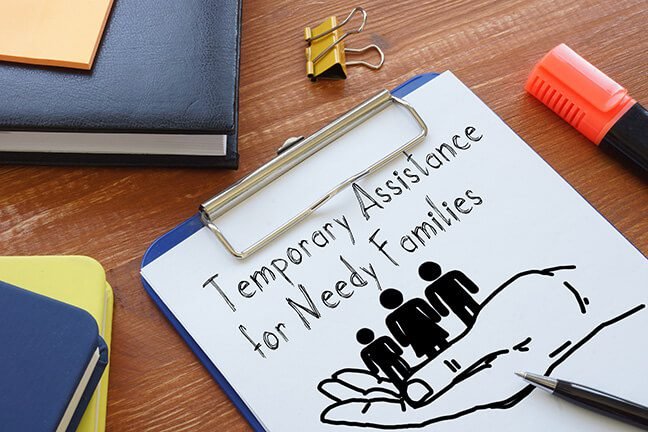Searching for what government benefits for immigrants and assistance programs are available in the US? This guide will cover and explain various assistance programs for legal immigrants from green card holders (lawful permanent residents) to immigrants that have already obtained US citizenship.
We’ll even provide a few examples of what some people were able to receive with these programs! There’s no reason why anyone who needs or is qualified for these benefits should be left out.

What is the Supplemental Nutrition Assistance Program (SNAP/ Food Stamps)?
The food stamp program, also known as the Supplemental Nutrition Assistance Program (SNAP), is a government program that helps people who are experiencing food insecurity or poverty afford food. This includes anyone who is unemployed/underemployed with only limited resources available for food.
According to the U.S. Department of Agriculture, a Lawful Permanent Resident (LPR) that qualifies for SNAP is divided into two groups.
No Waiting Period
- Qualified children under 18 years old
- LPRs with a military connection (veteran, on active duty, or spouse or child of a veteran or active duty service member)
- Lawful Permanent Residents in the U.S. who are receiving government payments for disability or blindness
- Refugees admitted under section 207 of INA (includes victims of severe forms of trafficking)
- Victims of Trafficking under the Trafficking Victims Protection Act of 2000
- For additional eligible non-citizens click:https://www.fns.usda.gov/snap/eligibility/citizen/non-citizen-policy
Lawfully Present Immigrants Eligible after a Waiting Period
- A Lawful Permanent Resident (LPR) who has earned, or can be credited with, 40 quarters of work, or
- Is an alien in one of the following groups who has been in qualified status for 5 years:
- Paroled for at least one year under section 212(d)(5) of INA
- Granted conditional entry under 203(a)(7) of INA in effect prior to April 1, 1980
- Battered spouse, child or parent with a petition pending under 204(a)(1)(A) or (B) or 244(a)(3) of INA
(Per the USDA site page: https://www.fns.usda.gov/snap/eligibility/citizen/non-citizen-policy)
Immigrants that have become U.S. citizens will follow the standard SNAP application requirements.
Additional SNAP requirements include:
A person’s household income must be below 130% of the poverty level to be eligible for food stamps. Work requirements (20 hours/week) must be met if there are no minor children in the home. The maximum monthly benefit is $188 per person or $835 for a family of four. The food stamps received could be higher, depending on the state you reside in.
The application procedure for food stamps is straightforward and may be completed online. You’ll need to provide your name, address, email, phone number, monthly income before taxes, monthly expenditures, and the information of any household members (including Social Security numbers) in order to apply.
After your application is approved, you will receive food benefits through an EBT card, which works like a debit card. You can use it to buy groceries at stores that participate in the program. However, you cannot use your food stamp benefits to pay for hot foods or prepared meals (like those found at a restaurant).
EBT cards can also be used to order groceries online which is convenient for immigrants that may not be able to travel to stores easily.
You must apply for SNAP benefits through your state’s office. Click the link to find your state office: https://www.fns.usda.gov/snap/state-directory

Supplemental Security Income Benefits
The Supplemental Security Income (SSI) Program gives extra money to low-income, blind, or disabled people who are 65 years old or older, as well as children younger than 18 if they have certain disabilities. If qualify for SSI benefits, the Social Security Administration (SSA) will send you monthly payments.
Depending on your circumstances, the benefits you receive from SSI can include a monthly payment to help cover costs such as food, clothing, and housing. You may also get some money for work-related or everyday expenses.
To qualify for SSI benefits, the SSA (Social Security Administration) must consider you disabled. Disability is often defined as having a physical or mental condition that makes it challenging to do basic work activities.
Non-Citizens Claiming SSI
There are strict guidelines for SSI which will limit the ability of non-citizens to claim SSI benefits.
Some of these include:
- Your sponsor’s income may count as resources and make you ineligible
- Your immigration status does not match one of the seven qualified aliens group
- If you entered the United States on or after August 22, 1996, then you may not be eligible for SSI for the first five years as an LAPR even if you have 40 qualifying quarters of coverage.
To check your eligibility and the complete list of requirements we recommend the U.S. social security webpage https://www.ssa.gov/ssi/spotlights/spot-non-citizens.htm

Can Immigrants Receive Housing Assistance?
Yes, U.S. citizen immigrants and Lawful Permanent Residents/ Green Card Holders are eligible to receive housing assistance. The purpose of this program is to help people afford safe and sanitary housing by paying their rent or sometimes just a portion of it (depending on the situation).
Public Housing and Section 8 Housing are two forms of housing subsidies. Both programs provide subsidies for all or part of the tenant’s rent, but there is a significant difference between them. People may live in government-owned or managed residences under the public housing program, whereas people may only reside in privately owned homes under the rental assistance program.
The requirements for housing vary depending on your age, living situation, and income level but you must meet all requirements in order to be accepted into a housing program.
Sign up for Pubic and Section 8 Housing at: https://www.hud.gov/program_offices/public_indian_housing/pha/contacts

Medicaid and How it Works
Medicaid is a government-funded health coverage program that serves over 74 million people in the United States. Each state has its own Medicaid program, which must meet federal guidelines.
In the United States, Medicaid is usually the medical coverage provider for low-income people. The program is administered by states to help vulnerable demographics such as children and pregnant women or elderly adults. Not only does Medicaid provide funding for acute care, but it also covers long-term care services like at-home health assistance or nursing home supervision. Moreover, Medicare beneficiaries can rely on Medicaid for support with extra services such as home or nursing care.
Medicaid is funded by federal and state taxes, and states have certain flexibility in determining who is eligible for Medicaid coverage. Medicaid eligibility rules vary by state; however, the government uses a formula to determine eligibility for most applicants within specific groups.
Are Immigrants Eligible for Medicaid?
Immigrants who are “qualified non-citizens” are generally eligible for coverage through Medicaid and the Children’s Health Insurance Program (CHIP), if they meet their state’s income and residency rules.
In order to get Medicaid and CHIP coverage, many qualified non-citizens (such as many LPRs or green card holders) have a 5-year waiting period. This means they must wait 5 years after receiving “qualified” immigration status before they can get Medicaid and CHIP coverage. There are exceptions. For example, refugees, asylees, or LPRs who used to be refugees or asylees don’t have to wait 5 years.
Additional Exemptions to the 5-Year Waiting Period
States have the option to remove the 5-year waiting period and cover lawfully residing children and/or pregnant women in Medicaid or CHIP. A child or pregnant woman is “lawfully residing” if they’re “lawfully present” and otherwise eligible for Medicaid or CHIP in the state.
Twenty-nine states, plus the District of Columbia and the Commonwealth of the Northern Mariana Islands, have chosen to provide Medicaid coverage to lawfully residing children and/or pregnant women without a 5-year waiting period. Click to learn if your state provides Medicaid.

Private Insurance Health Insurance Options for Immigrants
If you are not able to qualify for Medicaid there are other options for legal immigrants to obtain health insurance for their families.
Healthcare.gov
Healthcare.gov is an online platform run by US government that helps people shop for and enroll in health insurance. The website also provides information on various government programs like Medicaid and CHIP, as well as private insurance plans.
The site offers a range of resources and tools to help people understand their options and make the best decisions for their families.
Online Health Insurance Comparision Sites
There are also websites that compare insurance quotes from multiple companies. There is no cost to the applicant for this service.
Two of the larger health insurance comparison sites include:
National School Lunch Program (NSLP)
Low-income children in public and nonprofit private schools receive nutritious meals through the National School Lunch Government Program (NSLP). The NSLP is administered by the US Department of Agriculture (USDA), which sets meal requirements and prices. All students in participating schools can join, regardless of income.
Schools participate in the NSLP, which is a USDA-funded initiative that provides monetary subsidies and donated food items to help them prepare and serve lunches. Each day, the National School Lunch Program (NSLP) serves nutritionally balanced, low-cost, or free lunches to children. Schools may also use the funding to purchase meals from approved vendors.
What is the Immigrant Eligibility for NSLP?
There are no restrictions on legal immigrants applying for this reduced-cost school lunch program. You’ll need to apply through your participating school directly. Contact your child’s school for the application.
For more information about the National School Lunch Program, please visit:
https://www.fns.usda.gov/cn/applying-free-and-reduced-price-school-meals
Helpful tip: Immigrants that have children participating in the NSLP may be eligible for free cell phone service and data through the Affordable Connectivity Program.

Temporary Assistance for Needy Families (TANF)
The Temporary Assistance for Needy Families (TANF) program is designed to enable families in need to become self-sufficient. Grants are given to states so they can design and operate programs that help achieve one of the goals of TANF.
States provide cash assistance to TANF recipients for the purpose of:
- Provide assistance to needy families so that children can be cared for in their own homes.
- Reduce the dependency of needy parents by promoting job preparation, work and marriage.
- Prevent and reduce the incidence of out-of-wedlock pregnancies.
- Encourage the formation and maintenance of two-parent families.
Note: TANF is also referred to by various state names (ex. Florida Temporary Assistance for Needy Families)
Do Immigrant Low Income Families Qualify for TANF?
To qualify for TANF in your state you must:
- Meet the qualified alien status requirement
- Have a child 18 years of age or younger, or
- Be pregnant, or
- Be 18 years of age or younger and the head of your household.

The Lifeline and Affordable Connectivity Program
Lifeline and the Affordable Connectivity Program (ACP) are resources for anybody who qualifies for free or reduced cell phone and internet service. The Lifeline Program offers free cell phone service to people and families who fulfill certain requirements, whereas the Affordable Connectivity Program provides free or discounted internet service to households.
How to Qualify for Lifeline and ACP
Legal Permanent Residents are eligible for the Lifeline program if they or their child participate in the qualifying programs listed below, or if they have a gross household income at or below 135% of the Federal Poverty line.
- Supplemental Nutrition Assistance Program (SNAP)
- Medicaid
- Supplemental Security Income (SSI)
- Federal Public Housing Assistance (FPHA)
- Veterans and Survivors Pension Benefit
Another option to obtain free cell service and data is through ACP qualifying programs.
ACP Qualifying Methods
- National School Lunch Program NSLP
- Pell Grant
- WIC
- Income less than 150% of the Federal Poverty Limit
Click to learn more about free cell phone service.
Additional Federal Benefits Programs
We hope this guide has provided you with an understanding of the most common Federal benefit programs available for lawfully residing immigrants.
For a complete list of additional federal benefit programs you may qualify for, either as an immigrant who has already earned your U.S. citizenship or a Green Card Holder who recently immigrated to the US please visit Benefits.gov.

